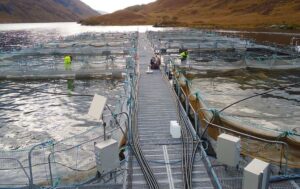R3-IoT’s gateways link up with nearby sensors and devices, using satellites in multiple orbits and cellular networks to transmit data through the cloud to customers — or to its software platform that translates the information into insights that inform business decisions.
The terminals have a 10-day battery backup and target customers requiring resilient connectivity in markets including aquaculture, utilities, infrastructure, digital health, emergency services and energy.
A growing number of satellite constellations dedicated to connecting Internet of Things (IoT) have been coming online recently, leveraging smallsat technology advances and cheaper, more available launch options.
However, R3-IoT co-founder and chief technical officer Kevin Quillien said demand is also rising for resilient end-to-end data services that “pure connectivity” solutions are not serving.
“For many key industries looking to digitise their operations, pure satellite connectivity alone doesn’t solve their problems,” Quillien said in an email.
“It is essential therefore that satellite connectivity integrate effectively into a technology stack that can use it to solve real customer problems.”
According to Quillien, drawing on multiple connectivity technologies enables the venture to fine-tune its end-to-end services for various needs.
“By wrapping the satellite services in a technology stack that provides end-to-end cybersecurity (from device to platform and back again), simple deployment and commissioning, decentralised management, and seamless integration into business systems, we enable satellites to solve day-to-day problems for companies, allowing them to streamline operations, save cost, improve safety, and reduce environmental impact,” he said.
North America’s vast landscape presents unique connectivity challenges, he added, and “many particularly in rural and remote areas simply do not have access to reliable connectivity.”
This is despite businesses becoming increasingly reliant on IoT technologies, especially out in the field.
Smart devices can be deployed to monitor equipment, predict issues, warn of problems and reduce the need for humans in remote or dangerous places.
Quillien said its seed round will help fund operations around 12-18 months beyond commercial launch, enabling it to focus on commercializing at scale, establishing North American operations and growing market share in the U.K. and Europe.
He declined to disclose the startup’s satellite partners, although R3-IoT was one of the industrial winners that took part in low-Earth-orbit broadband operator OneWeb’s recent innovation challenge.



